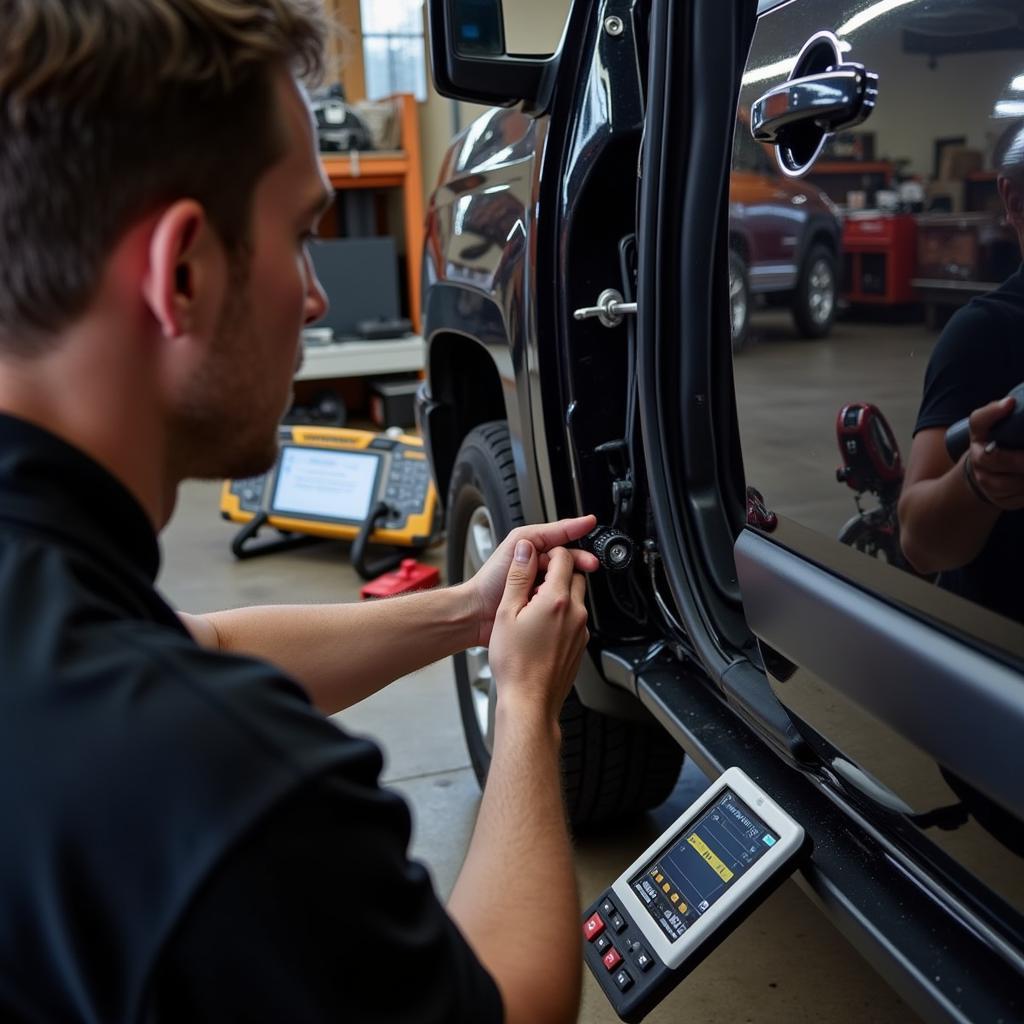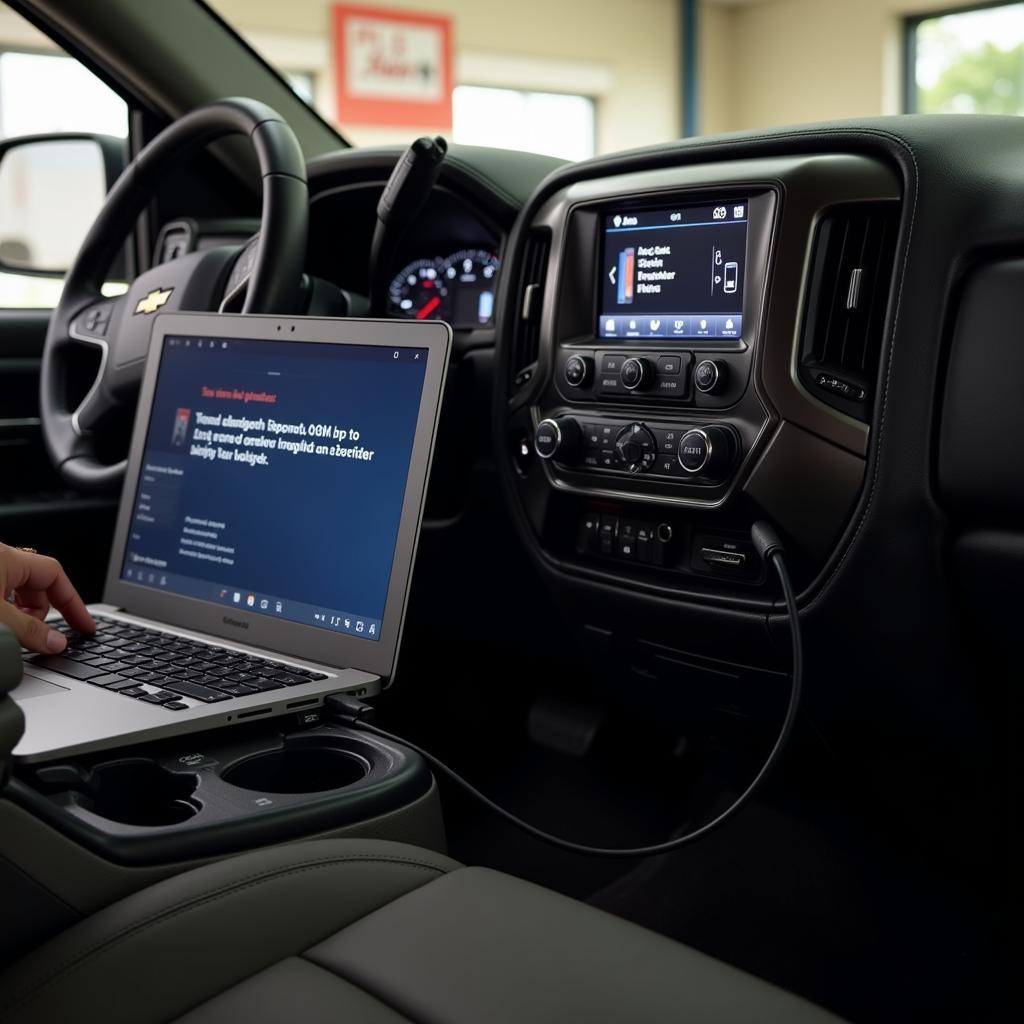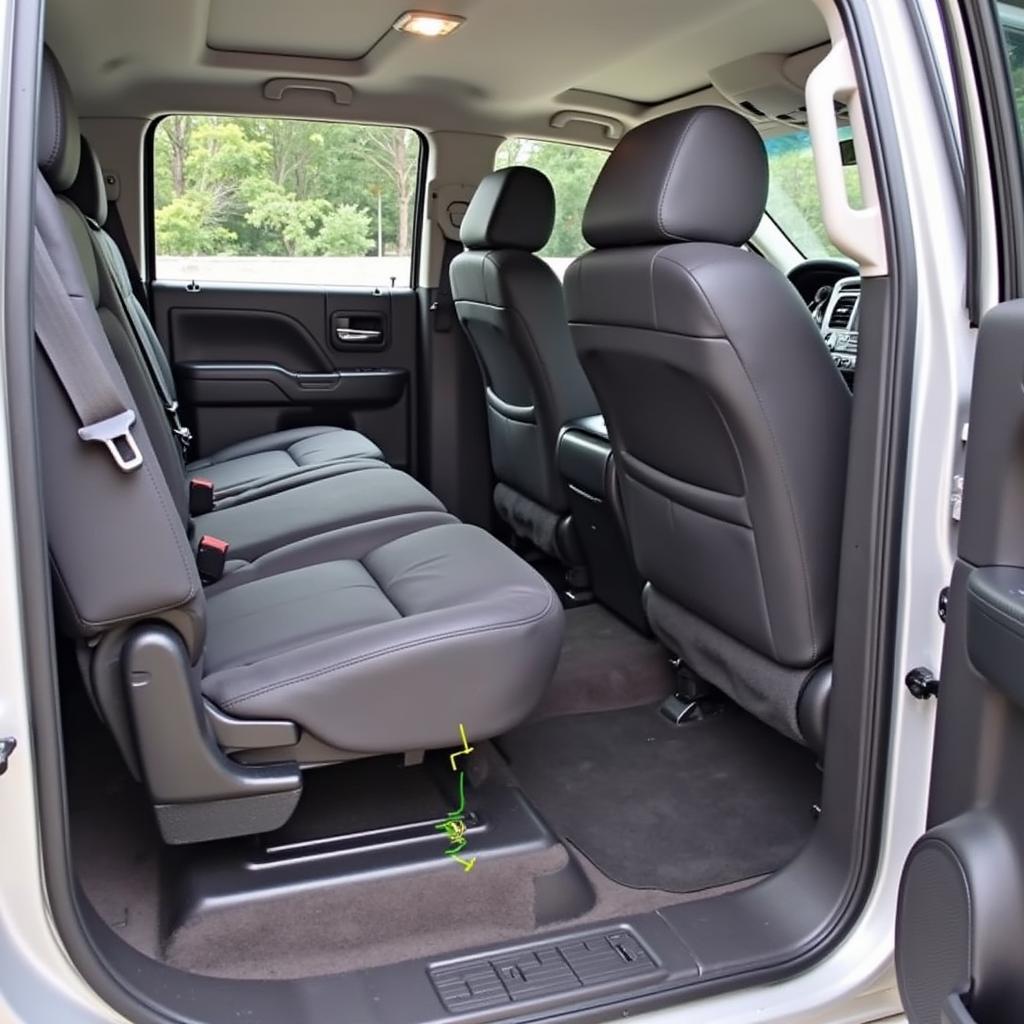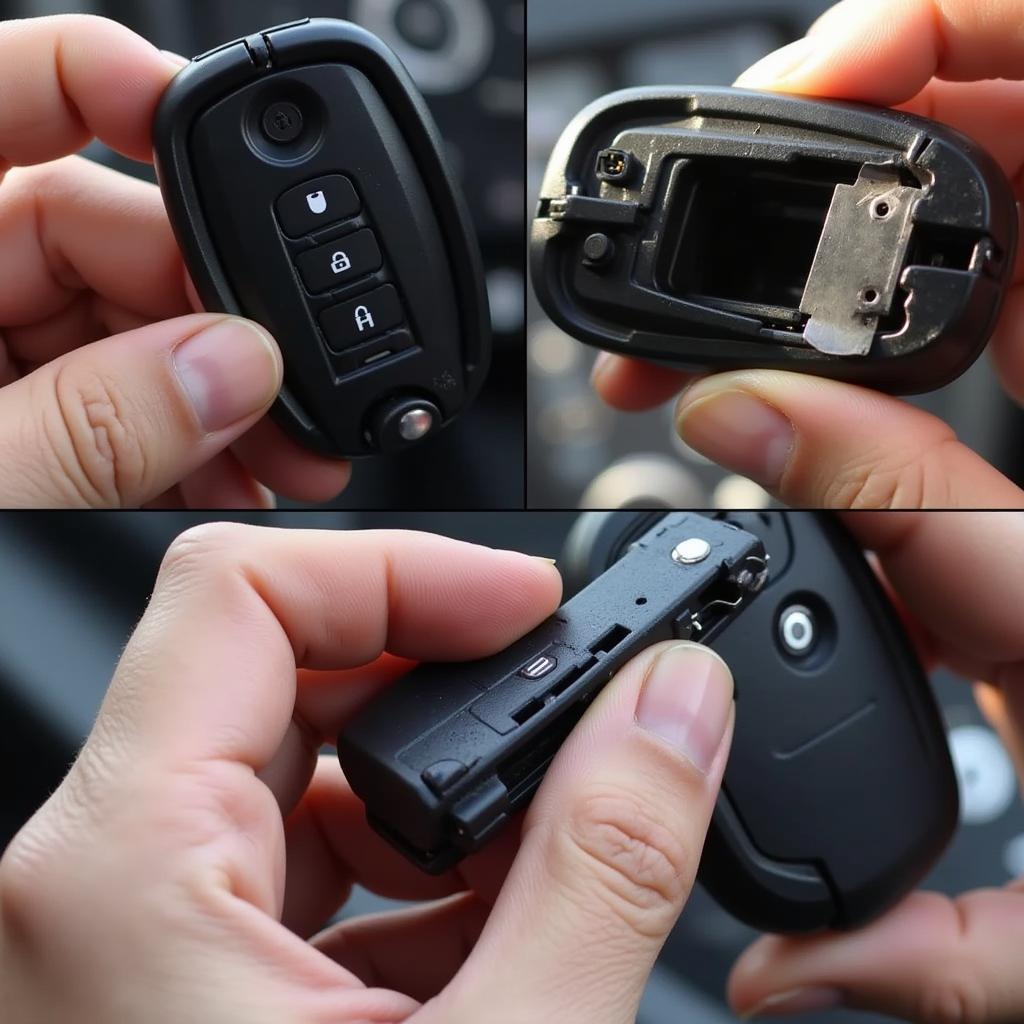If you’re driving a newer model Chevrolet Silverado and see a “Look in Back Seat” warning, you’re not alone. This safety feature is designed to prevent children and pets from being accidentally left in the back seat, especially in hot weather. This article dives into what triggers the warning, how it works, and how to troubleshoot common issues.
Understanding the “Look in Back Seat” Warning
Chevrolet, like many other car manufacturers, implemented the “Look in Back Seat” warning system as a response to the increasing number of hot car deaths. The alert is a reminder to check the back seat for children or pets before leaving the vehicle. The system typically uses door sequencing logic:
- Scenario: If the rear door was opened and closed before you started and then ended your trip, the system assumes something (or someone) might be in the back.
- Trigger: The warning is triggered when the engine is turned off.
- Alert: A visual message on the driver information center and a series of audible chimes alert you to “Look in Back Seat.”
Common Causes and Troubleshooting Tips
While the system is designed for safety, it can sometimes be triggered unnecessarily. Here’s a breakdown of common causes and how to address them:
1. Faulty Door Sensor:
- Problem: A malfunctioning rear door sensor can send incorrect signals to the system, triggering the warning even if the back seat is empty.
- Troubleshooting: Inspect the rear door latches and sensors for visible damage or debris. If you suspect a sensor issue, a professional diagnostic scan can pinpoint the problem.
 Chevrolet Silverado Door Sensor Malfunction
Chevrolet Silverado Door Sensor Malfunction
2. Software Glitch:
- Problem: Like any software-driven system, glitches can occur, leading to false activations of the “Look in Back Seat” warning.
- Troubleshooting: Sometimes a simple fix is to restart your Silverado. If the problem persists, a software update at a dealership or through remote software installation services might be necessary. 2014 chevy silverado trailer brake system warning
 Silverado Software Update for Back Seat Warning
Silverado Software Update for Back Seat Warning
3. Weight Sensor Sensitivity:
- Problem: Some Silverados have weight sensors in the rear seats. These sensors can be overly sensitive, triggering the warning even with light objects.
- Troubleshooting: There’s no easy fix for sensor sensitivity. Try placing objects on the floor rather than the seat if you regularly carry lighter items. Adjusting the sensor’s sensitivity often requires professional help.
 Silverado Back Seat Weight Sensor Location
Silverado Back Seat Weight Sensor Location
4. Aftermarket Installations:
- Problem: Installing aftermarket accessories or modifications that involve the electrical system, especially around the doors or seats, can interfere with the back seat warning system.
- Troubleshooting: Check any recent installations for loose connections or wiring that might be impacting the system. If you suspect an aftermarket installation is the culprit, consult a qualified technician.
Can I Disable the “Look in Back Seat” Warning?
While it might be tempting to disable the warning due to false triggers, it’s not recommended. Disabling safety features can have serious consequences, especially if children or pets are involved.
Expert Insights
“The ‘Look in Back Seat’ warning is a crucial safety measure that has saved lives,” says automotive electronics expert, John Miller. “While it can be frustrating to deal with false alarms, it’s vital to address the root cause rather than simply disabling the system. Remote diagnostic services and software updates can often resolve these issues effectively.”
Importance of Professional Diagnosis
If you’re unable to resolve the “Look in Back Seat” warning on your Silverado yourself, seek professional help. A qualified technician with experience in automotive electronics and remote diagnostic tools can accurately diagnose and address the problem, ensuring the system functions correctly. 2007 silverado 1500 ls classic seat causing airbag warning 2019 chevy silverado key fob battery
The “Look in Back Seat” warning on your Silverado is an important safety feature. While it can be annoying to deal with false alarms, understanding the system and potential causes can help you resolve the issue quickly and safely. Remember, professional help is always available if needed.

